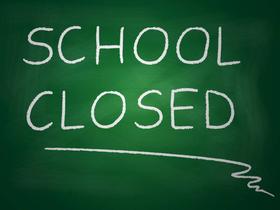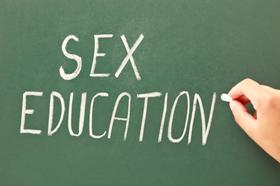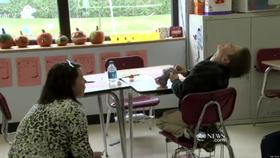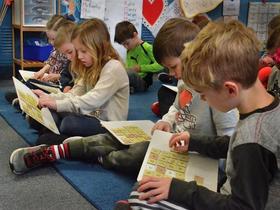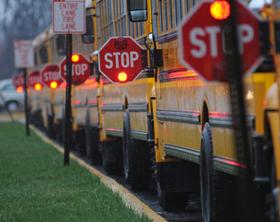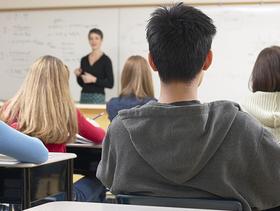Now that the sequester has officially gone into effect, many are wondering how spending cuts will impact the public school system across the country. While federal funding cuts would not take effect for any schools until the new school year begins in the fall, concerns are now in educators', parents', students', and community members' minds. In fact, some districts are already taking steps to make appropriate adjustments in case federal funding does not come as planned.
What is the Sequester?
The sequester is a series of budget cuts that were enacted by the Budget Control Act and signed by President Obama in August 2011. The budget cuts were designed to incentivize Congress to find a solution to the country’s debt crisis. They were never meant to go into effect, but a stalemate in Congress has led to the implementation of the dreaded sequester.
According to the Huffington Post, the sequester impacts most current government spending. The U.S. military and national security operations will see about $550 billion of the $1.2 trillion in cuts. The rest will be cut from domestic programs, including unemployment benefits, health care – and education. Due to how the sequester was set up, some areas of federal funding, such as Medicare, social security, and money spent on wars, will see no impact.
The sequester took effect on March 1 at 11:59 p.m. Congress could still minimize the impact of the new law by coming to an agreement on a different approach to balancing the budget. If that occurs, schools may not see the federal funding cuts that are currently looming. However, because Congress has had months and even years to come to that agreement, school districts must begin preparing for the worst in anticipation that the agreement won’t come on time.
This video explains what a sequester is.
Where Will Schools Feel the Hit?
The drop in federal funding will be felt differently by schools in different areas of the country. The primary purpose of federal funding in public schools is to provide much-needed services for the poorest and most disadvantaged students in the country. Known as Title I funding, the money typically goes to support staff and education services for these students. The sequester will also impact services for special needs students.
The impact of the budget cuts may be minimal for schools that don’t have a high percentage of poor students. However, schools that rely on Title I funding to serve a larger population of students could be hit hard when the new cuts become reality this fall. Students going to schools on Native American reservations or near military bases will also feel the hit. These schools frequently rely on federal funding instead of property taxes that are not collected in these areas.
Education Secretary Arne Duncan stated on National Public Radio that high-poverty schools could lose as much as $725 million in Title I funding. At the same time, special education services could lose around $600 million.
This video explains the impact of a sequester on our public schools.
D.C. Bracing for Sequester Effects
The District of Columbia is one area that could feel the impact of the sequester in profoundly negative ways, according to a report at NBC Washington. Washington, D.C., gets $11 million from federal funding annually to provide services for special needs and poor children. While that only amounts to three percent of the total budget in Montgomery County, the percentage is high enough in Prince William County to be devastating to the school district.
“It’s terrible because my kids depend on that,” one parent told NBC Washington. “They give them lunch, and if I leave them for the evening, they give them food. This is really going to be a damper. They should try to cut somewhere else.”
Oklahoma Schools Anticipating Major Education Cuts
In Oklahoma, the sequester may seriously impact the current quality of education as well. News on Six reports that the student population at Celia Clinton Elementary is almost all poor. Most of these students rely on federally funded services like teaching assistants, tutors, and smaller classes. If the sequester continues, the school is anticipating the cut of at least one and maybe two teaching assistants by fall.
Jill Hendricks, manager of federal funding for Tulsa Public Schools, told News on Six that if the full effects of the sequester are felt, the Tulsa school district could lose a significant amount of the $63 million the district currently receives in federal money. For Celia Clinton, that could total more than $250,000 each year.
Devastating for Reservations, Military Bases
The biggest educational impact of the sequester will undoubtedly be seen on Native American reservations and military bases. The Washington Post reports that one school district on a Navajo reservation in Arizona is contemplating the closure of three out of seven schools next year. The Window Rock School District superintendent, Debbie Jackson-Dennison, told the Post that the district may not have any other avenues if federal funding is cut as anticipated.
There are currently around 1,600 schools on reservations and military bases. Those schools already feel the impact of the sequester since a high percentage of their funding comes from the federal government. In areas like Killeen, Texas, where around 42,000 students attend school near the Fort Hood Army base, it is easy to see just how widespread the effects of the sequester could be.
For now, the sequester stands due to the inability of Congress to reach a budget-balancing agreement. Many educators across the country are hoping and praying that the situation changes quickly in Washington before it gets worse at public schools from coast to coast.
Questions? Contact us on Facebook. @publicschoolreview








